Biomedical Signal Processing
1/36
There's no tags or description
Looks like no tags are added yet.
Name | Mastery | Learn | Test | Matching | Spaced |
|---|
No study sessions yet.
37 Terms
Signal Processing Modules (4)
Voltage amplifiers
Current amplifiers
Filters
Comparators
Types of Voltage Signals (3)
Continuous / Pulse
DC / AC
Periodic / Aperiodic
Continuous / Pulse (2)
Continuous signals vary smoothly
Pulse signals change abruptly
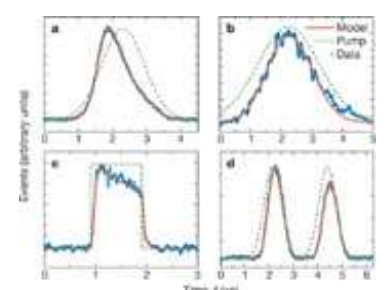
DC / AC (2)
DC (Direct Current) has a constant voltage
AC (Alternating Current) varies periodically
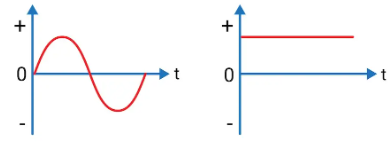
Periodic / Aperiodic (2)
Periodic signals repeat at a regular interval, defined by period T
Aperiodic signals do not repeat regularly
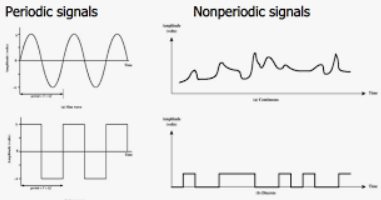
ECG (=EKG)
A periodic signal consisting of 6 pulses
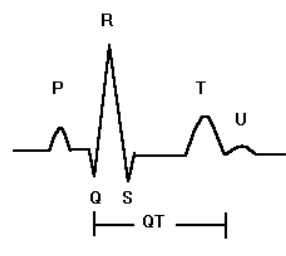
Sine Wave Voltages EXAMPLE
Period (T) = 4 ms
Frequency (f) = 1/T = 250 Hzf
Amplitude (A) = 2.4 V
Voltage Expression:
V=A×sin×(2πft)2.4×sin×(2π×250t)=2.4sin (1586t)
In signal processing we work entirely with sine wave signals
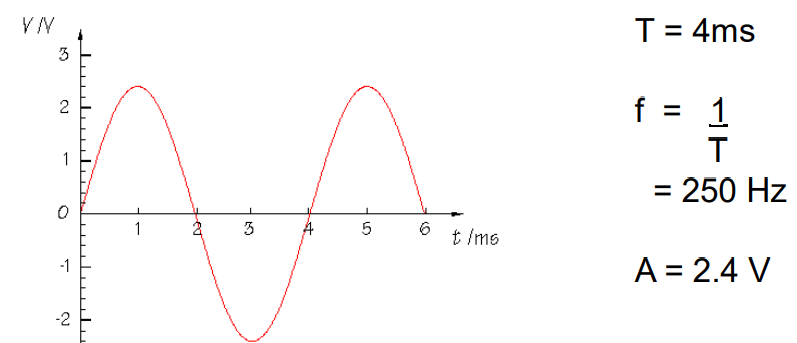
General Formula of Sine Wave Voltages
V = A×sin×(2πft+ϕ), where ϕ is the phase
Adding Sine Wave Voltages
Combining sine wave voltages of different amplitudes and frequencies can create signals of any shape.
Adding Sine Waves
Results in a not-sine wave
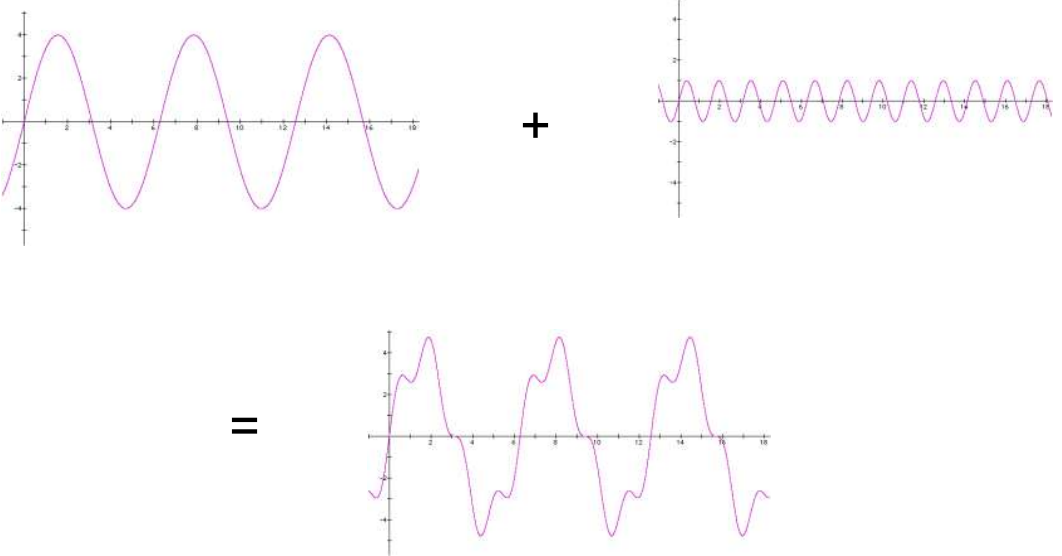
Adding Sine Wave Voltages
A = amplitude
f = frequency of sine wave
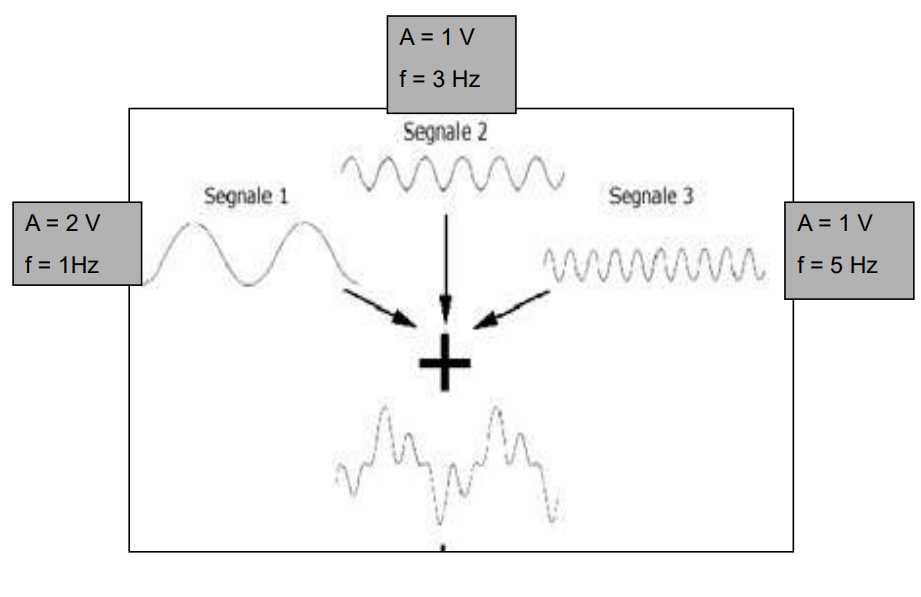
Adding two waves of equal amplitude but slightly different frequency (photo)
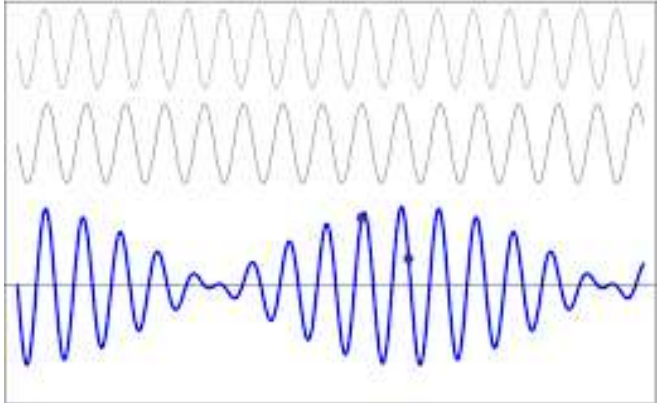
Adding Sine Waves - Producing square waves from sine waves
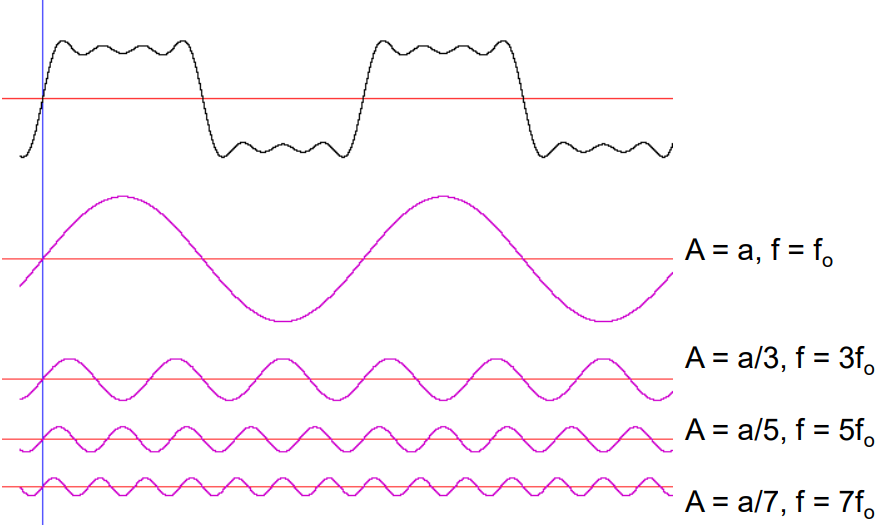
Fourier Analysis (10)
Splitting:
1st wave can be split - by a sine wave splitter
decompose a signal into its constituent sine waves (frequencies) and amplitudes (2-5 wave)
Amplifying - amplifyer sine waves:
each of it is amplified 10x
multiplying the amplitude
Reconstruction:
they are added together
results in a signal that is 10x bigger in amplitude compared to the original signal
becomes distorted
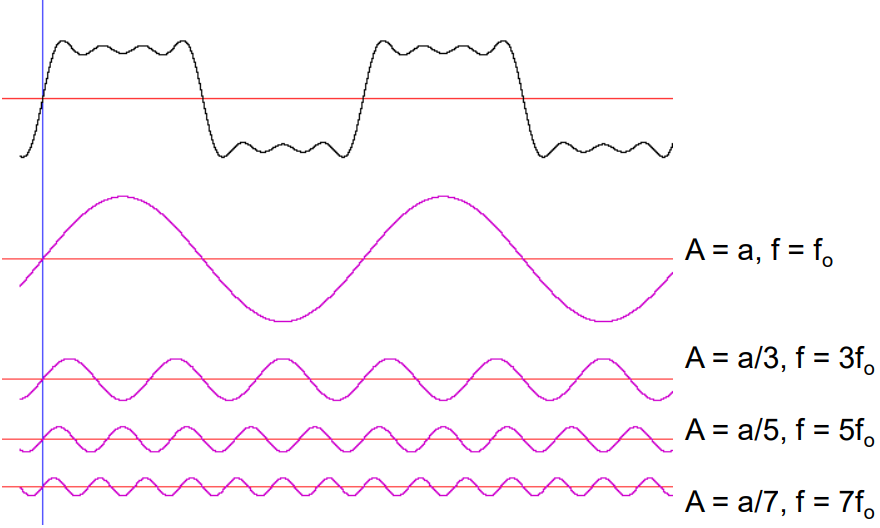
Fourier Transform
Breaks a signal into its frequency components
Inverse Fourier Transform
Any signal, regardless of shape, can be expressed as a sum of sine waves with different frequencies and amplitudes
=Reconstructs the original signal from its frequency components
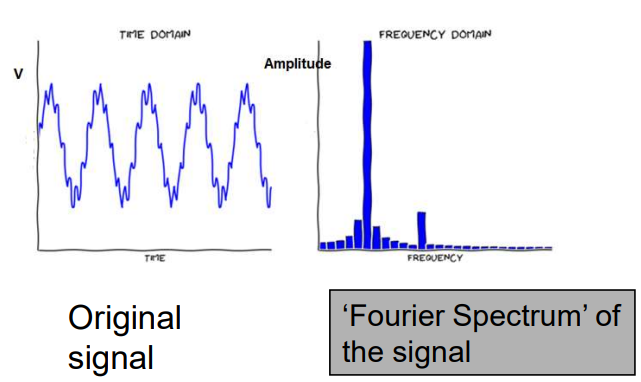
Voltage Amplifiers symbol (photo)
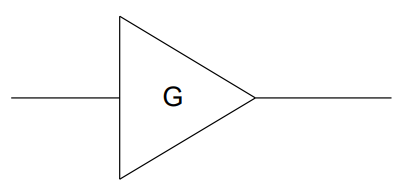
Voltage Amplifiers formula
Vout = Vin x G
G = Voltage Gain of amplifier
Vout = output voltage
Vin = input voltage
Amplifier Purpose
It should amplify the signal (e.g., from a patient) without altering its shape, ensuring accurate representation of the original signal
Bandwidth Limitation (2)
To avoid distortion, all frequencies in the biomedical signal's frequency spectrum must fall within the range
Amplifier's bandwidth is too narrow → fail to amplify certain frequencies → causing distortion
Frequency Response
The range of frequencies over which the amplifier maintains consistent gain
Signal distortion (2)
The alteration of the original shape or characteristics of a signal as it passes through a system
due to factors: bandwidth limitations or non-linearities
Frequency response of amplifiers
ideal and actual amplifier - never ideal
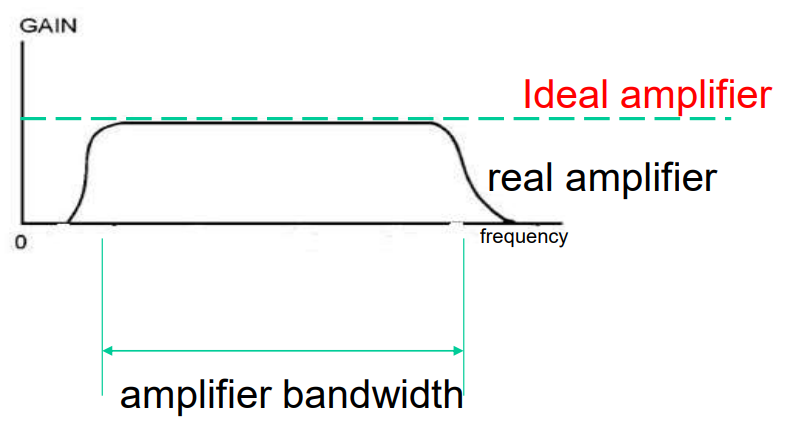
Types of Amplifiers (6)
Voltage Amplifiers
Differential Amplifiers
Logarithmic Amplifiers
Isolation Amplifiers
Current Amplifiers
Filters
Differential Amplifier Formula and Meaning (2)
Vout = (Vin1 − Vin2) × G
difference between two input voltages is amplified
Differential Amplifier Use (3)
ECG; spectrophotometers
Require Isolation Amplifiers*
Isolation Amplifiers (3)
output is completely isolated from the input
crucial for patient safety in medical applications
preventing electrical shocks or interference between the patient and the equipment
Logarithmic Amplifier Formula and Meaning (2)
Vout = log (Vin1) × G
Output is proportional to the logarithm of the input voltage
Logarithmic Amplifier Use (2)
spectrophotometers; digital x-ray radiography systems
Current Amplifiers definition + example
Amplify the current without changing the voltage
fx.: pH meters
Current Amplifiers Types (2)
Buffer Amplifiers
Power Amplifiers
Buffer Amplifiers
Amplify current from μA to mA without altering the voltage
A=amper
Power Amplifiers
Amplify current from mA to A
Filters Definition
Amplifiers designed to have specific frequency responses, used to allow or block certain frequency ranges
Types of Filters (8)
Low-pass Filters
High-pass Filters
Band-pass Filters
Band-stop Filters
Tuned Filters
Notch Filters
Integrating Filters
Differentiating Filters
Pulse Signal (4)
Contains many frequencies in its Fourier spectrum
Can be represented as a combination of sine waves with different frequencies
Each frequency contributes to the overall shape of the pulse signal
Has a bandwidth of frequencies that define its frequency range
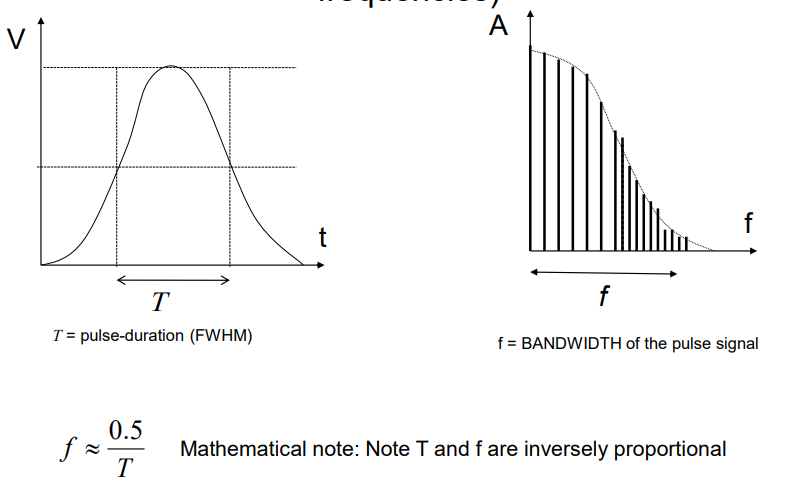
Power Gain of an Amplifier Formula
Power Gain (in dB) = 20 × log (Gain)
dB = decibels
Gain = amplification factor of the signal